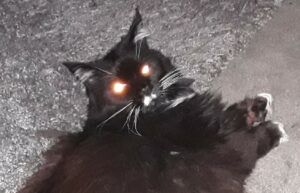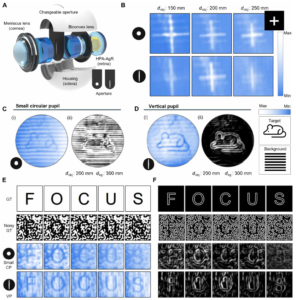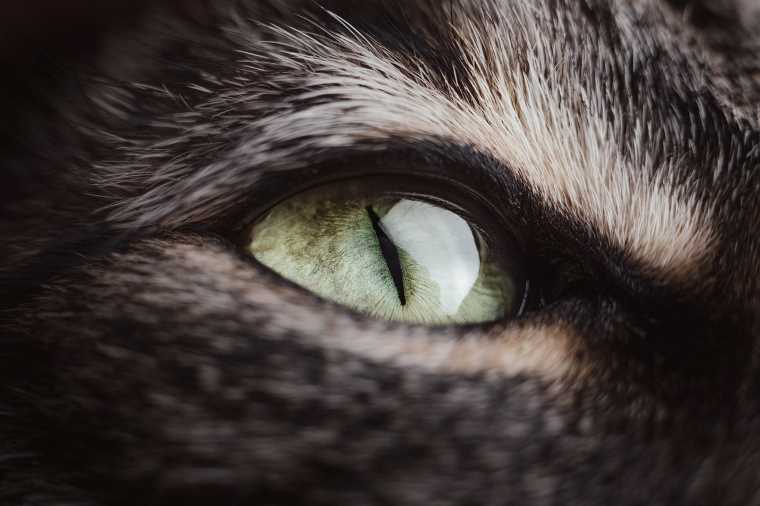Researchers from South Korea’s privately owned Gwangju Institute of Science and Technology report creating the world’s first ‘cat’s eye’ camera inspired by the function of actual feline eyes.
According to the researchers behind the invention, the novel device can detect images through camouflage and in extremely low-light conditions by mimicking the feline eye’s vertical pupil and mirror-like, light-augmenting structure.
Although not yet commercially available, the team believes their potentially revolutionary approach could dramatically increase the effectiveness of imaging platforms like autonomous cars, drones, and mobile robots that need to see better and differentiate the objects and terrain around them.
Cat’s Eye Camera Inspired by Real Cat Eyes
In their published study, the inventors of the cat’s eye camera say software solutions that help cameras see in low-light conditions already exist. However, those applications are expensive and consume significant amounts of power. This problem is enhanced by complex environments that can make it challenging to differentiate objects and backgrounds.
“These (low light) challenges can be further amplified when objects have textures similar to their backgrounds, leading to undesired camouflage effects,” they explain.
Hoping to find a cheaper, practical solution that could address both issues, the team says they looked for inspiration in nature. This search led them to the unique abilities of cats to see in low-light conditions and against varied, often complex, camouflaged backgrounds.
“Because of their unique iris dilation and contraction, felines can clearly perceive a target regardless of lighting conditions, distinguishing them from other mammals,” the team explains.
Cats’ eyes accomplish this extraordinary feat via two physical components: the vertical pupil and a mirror-like structure positioned behind the pupil called the tapetum lucidum. According to the research team, the vertical pupil helps the cat’s eye control incoming light levels in both bright and dim conditions. The novel shape also creates a vertically blurred background, “allowing cats to filter out excess background noise.”
While the pupil controls the light flow, the tapetum lucidum concentrates that light and reflects it onto the animal’s retina, increasing its perception. The vison-enhancing structure also gives cat eyes their distinctive glow.


Team leader Min SU Kim and colleagues mimicked the vertical pupil of the cat’s eye by creating a customized, slit-like aperture at the front of their camera’s lens. The tapetum lucidum inspired a hemispherical silicon photodetector array with silver reflectors that sit behind the camera lens. Like the structure in a cat’s eye, this array reflects light onto the lens, increasing the device’s overall visibility and clarity in low light conditions.
Tests Show Improvement in Object Recognition and Overall Quality
While the research team says that their theoretical models predicted that the cat’s eye camera should be more effective at low-light imaging and object clarity than one with a traditional lens and without its light-enhancing photodetector array, they decided the best way to measure its performance was to run actual tests.
After assembly, the team tested their cat’s eye camera against a standard “circular aperture” camera. Specifically, this test involved taking pictures with each device and comparing the two for overall image quality and performance in an object recognition model.


According to the press release announcing the potentially breakthrough device, those who tested it said their bio-inspired cat’s eye camera was more sensitive in low light and took more easily recognizable images than the standard camera.
“When run through one object recognition model with complex backgrounds, the vertical pupil camera had more than a 10% better accuracy rate than the small circular aperture camera,” the release explains.
Engineers Could Mimic a Cat’s Head to Maximize Camera’s Efficiency
The researchers concede that their device’s image quality is limited due to low pixel resolution. However, they also note that higher-quality image sensors are commercially available and could be adapted to their customized aperture and photodetector array.
The team also says that the nature of a vertical pupil inherently limits the camera’s field of view, but that is “a tradeoff that cats and other animals with vertical pupils must also make.”
To address this issue, the team recommends engineers look to the same animal for inspiration by “mimicking the head and extraocular muscles found in these animals.” This change would allow the operators of a similarly designed camera used in a drone or other remotely operated system “to reposition the camera and enable scanning of a wider area.”
Still, even with these limitations, the team says their cat’s eye camera represents a potential breakthrough in imaging technology, with a wide array of possible applications across several industries.
“Theoretical and experimental analyses demonstrate the system’s ability to filter redundant information and detect camouflaged objects in diverse lighting,” they write, “representing a substantial advancement in monocular camera technology and the potential of biomimicry in optical innovations.”
The study “Feline-eye-inspired artificial vision for enhanced camouflage-breaking under diverse light conditions” was published in Science Advances.
Christopher Plain is a Science Fiction and Fantasy novelist and Head Science Writer at The Debrief. Follow and connect with him on X, learn about his books at plainfiction.com, or email him directly at christopher@thedebrief.org.

